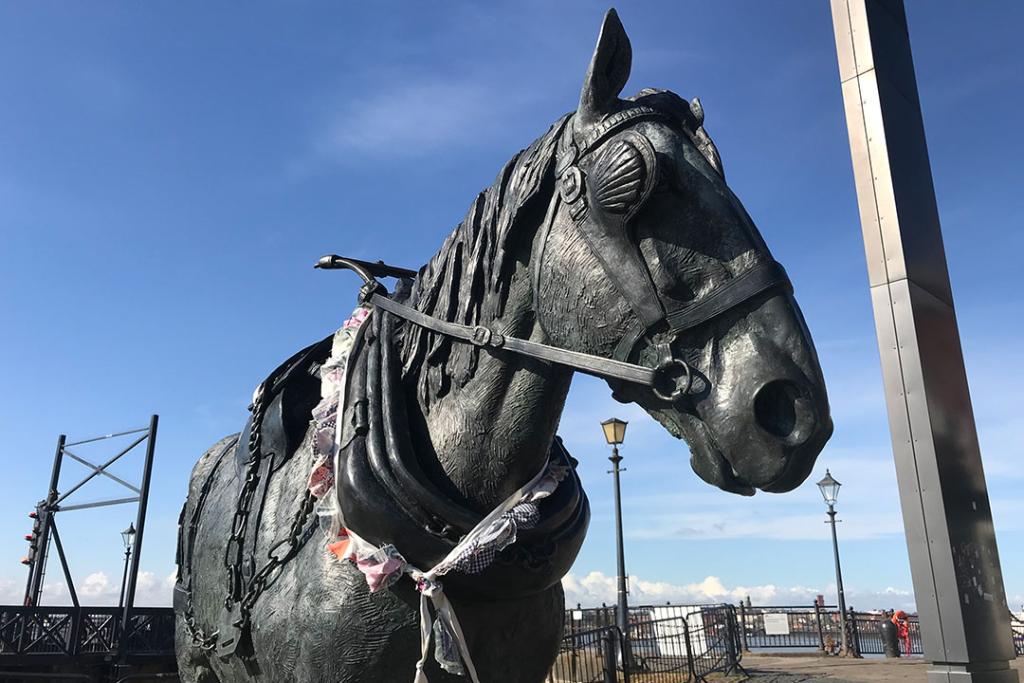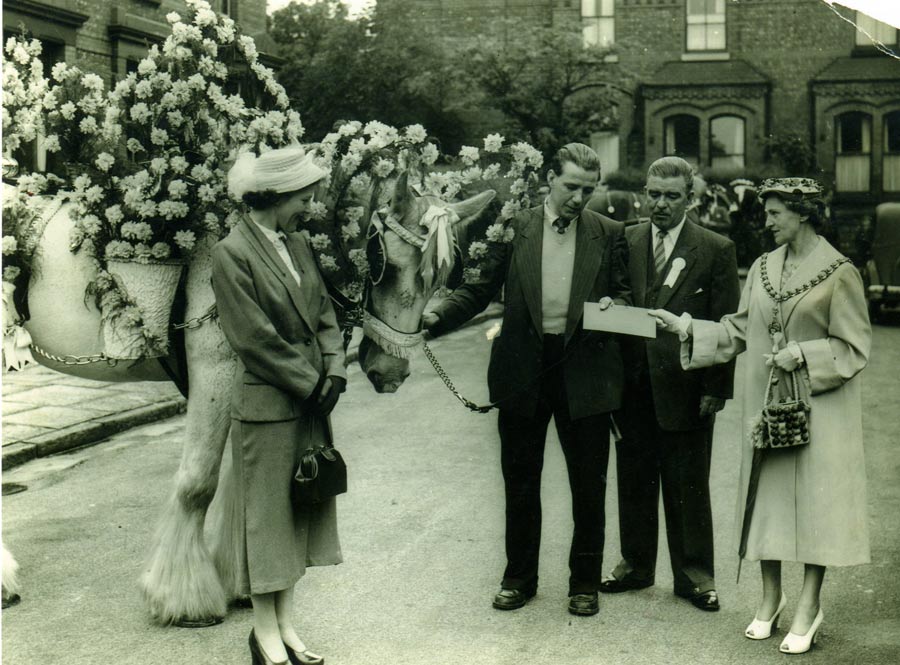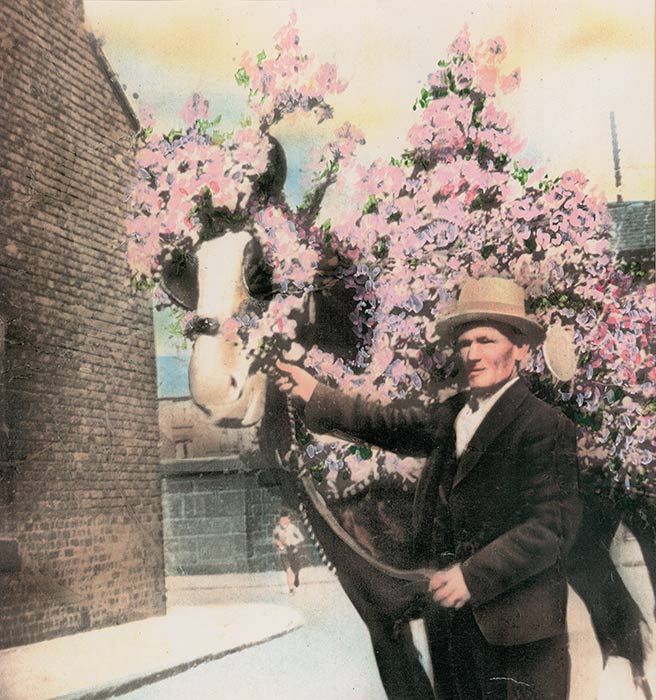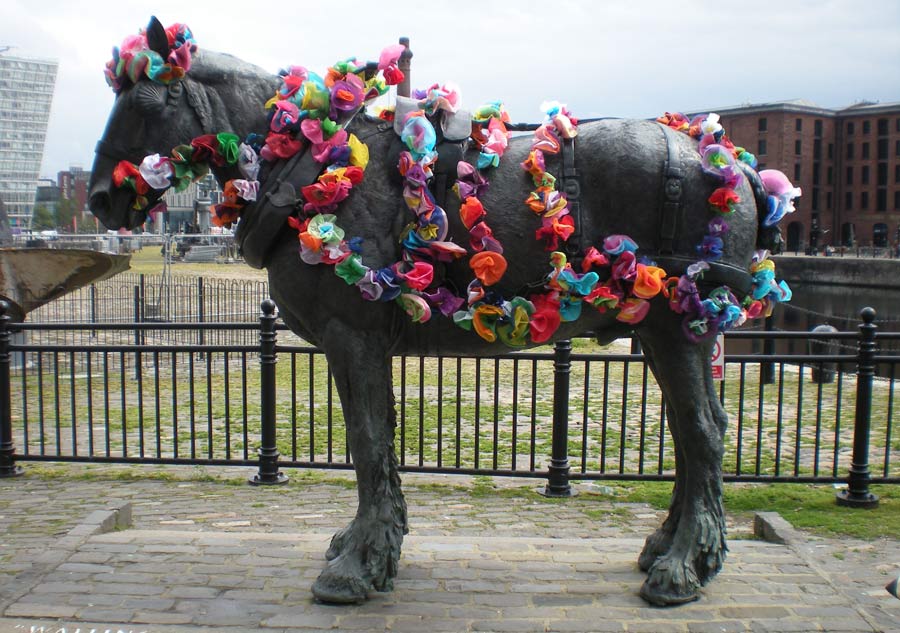
May Day Parades, a proud Liverpool tradition

Liverpool working horses and the carters that drove them had a proud record of over 250 years of service to their city. They were renowned for their beautifully turned out horses and the immense loads they pulled as a matter of course each day.
Being a carter was a hard life, there wasn’t much joy involved in the work - it was heavy, backbreaking stuff, done in all weathers with the minimum of mechanical help. Your friends and colleagues could cheer you up but your main, and often only, source of happiness would be your horse. Powerful, loyal and with distinct personalities, the carters loved their horses with a passion. It was what got them up at 5am and enabled them to work through a long and difficult day often until 7 or 8pm.

The relationship between man and horse was crucial to the job and local parades and shows were a way in which this love and pride could be expressed. The most famous of these events was the May Parade, which celebrated the power and majesty of the working horse, and by the 1840s had become an important feature of Liverpool life.
Prizes were awarded in several categories and competition was fierce to win ‘neatest and cleanest’, the ‘best turned out team or single horse’ and to be awarded the coveted ‘best decorated’ prize.
In 1911 The Daily Post reported on May Day:
"Beneath a blue sky, Liverpool’s large collection of the finest draught horses in the world was judged, marshalled and paraded through the leading thoroughfares. The citizens regarded the spectacle with a serenity of pride, but strangers looking on in wonder, declared that the half had not been told them of the quality of the powerful animals, of the perfection of their grooming, or of the care and skill bestowed upon the polishing of the gears and the wealth of decoration. Never was the procession so complete a triumph."
On 1 May 2010 a poignant monument to the Liverpool Working Horses was unveiled on the waterfront. The impetus for this came from a group of former carters and amongst the group were several prolific showmen.
Showing horses at the Parade

Albert Sargeant won awards at all the local shows and won the May Day Parade three times on the run. Albert is pictured here winning First Prize at Bootle in 1952 with his uncle’s horse Bob. Bob is decorated with pink and lilac crepe paper carnations made by Albert’s wife Madge, interspersed with real fern bought at the crack of dawn from the flower market.
In his book Liverpool’s Working Horses, Harry Wooding tells of his father’s preparations for the Liverpool Show at Wavertree Playground. George Wooding worked as a Carter for the Liverpool Health Committee and all his family were involved with his daughters making stacks of wax flowers and his sons polishing the buckles and brights. Show day saw everyone up early and the horse ‘Delightful’ (pictured below) was groomed and shined and his mane and tail plaited. Following a successful day on parade Delightful went on a tour of the local pubs mopping up trays of beer as a reward!

Tommy Bainbridge was involved with showing horses from being a young boy. In an interview in 2004 he said:
"You knew what to do. You weren’t taught you know... I was always interested in polishing and showing so I worked with men that were great polishers. There was a lot of secrecy in it, see, how to make the polish which I still do now. We showed all over the place and I’ve won the lot. The Woolton Show, we won that six years on the run, I’ve won it eight times, but six years continuously - that’s a record that they couldn’t break."
Fundraising for the monument
This rich history and their love for the horses they worked alongside is what led the Liverpool Retired Carters Association to fundraise for 13 years to build the magnificent ‘Waiting’ which stands proudly on the waterfront.

I became involved in the project in 1999 and we began having regular meetings with the group eventually became a charity. Fundraising took many forms, starting with charity nights in local social clubs raising money amongst people who still remembered the horses on the streets and the important role they played.
Appeals on local radio and in the Liverpool Echo were successful in raising the profile of the project and brought in donations large and small from members of the public. Many of the donations were accompanied by letters detailing a family history in carting or a memory of the smells and sounds of working horses around the city. The letters all form part of the archive for the monument.
Everyone in the group played their part from doing a sponsored slim to collecting around the local pubs and donating money from their winnings at the bookie! Jimmy Smith said of the project "what we’re trying to do now, it’s only for the love of the horses that we’re doing it, that’s what it’s all about.”"
So many fabulous people helped with the fundraising but a special mention has to go to Mike Storey, now Lord Storey of Liverpool. The carters had met him as a group to discuss the monument very early on and his input as Leader of the Council and then Lord Mayor of Liverpool was crucial to the monument actually being built.
Celebrating the Liverpool working horses
Waiting: The monument to the Liverpool working horse was designed and sculpted by renowned equine sculptor Judy Boyt in consultation with the all of the carters. Judy is a supremely talented lady who stuck with the project for many years never knowing whether fundraising would be completed. She has become a great friend to us all and regularly visits the Museum of Liverpool to take part in our annual Carters Day.

Each year, around 1 May, we run an afternoon of talks, a display of photographs and objects and our Learning and Participation team do an amazing job organising craft sessions and the making of flowers. At the end of the event we decorate ‘our horse’ with the flowers our staff and visitors have made and pause to remember the carters no longer with us.
Whenever I am at the sculpture I can't help remembering that sunny day in 2010 when the monument was unveiled and the dream of a permanent monument came true for these loyal and dedicated men. Waiting will stand proud on the waterfront and commemorate this fascinating aspect of the city’s history for generations to come.
